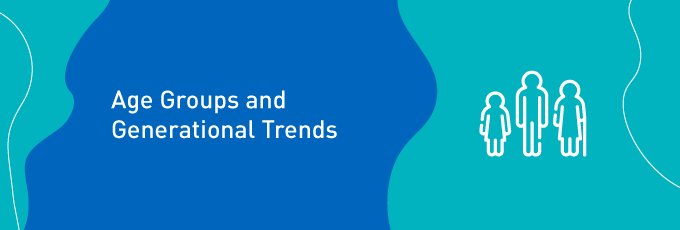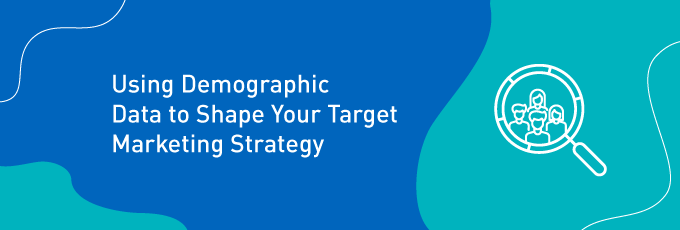
Just like a compass guides a traveller through unknown terrain, demographic data acts as a guiding star for your marketing strategy. Understanding the power of demographics in shaping your target audience is crucial for navigating the online business landscape. In this article, we’ll explore how demographics play a pivotal role in charting your course to marketing success and how you can harness this invaluable information for a tailored and effective campaign.

Defining demographics
Demographics are the characteristics of a population, such as age, gender, income, education, and occupation, among others. In the world of marketing, demographics help you segment audiences based on data that influences their behaviour and purchasing decisions. This valuable information is used by marketers to create tailored messages designed to resonate with specific consumer groups.
Here are some ways demographics can be used to support your target marketing strategy:

Age groups and generational trends
Understanding the preferences and habits of each age group is crucial for crafting content and promotions that hold relevance. From Baby Boomers to Gen Z, each generation has different motivations and expectations when it comes to interacting with businesses.
- Baby Boomers are more inclined towards slow-paced, informative material that emphasises product quality and features
- Generation X is considered adaptable to different engagement strategies, showing interest in both traditional and digital marketing
- Millennials favour authentic, personalised experiences and appreciate social proof and eco-friendly products
- Generation Z demonstrates a strong preference for quick, “snackable” content with an engaging, mobile-first mindset.
By tailoring your content to match the preferences of specific age groups, you can improve audience engagement and overall marketing effectiveness.
Gender and communication style
Gender also has a significant impact on marketing communication styles. Male audiences often respond better to concise and action-driven messages, while females generally engage with more emotionally-appealing content. Understanding these nuances can help you customise your content to resonate with your target demographic more effectively.
“Creativity is the source of magic.”

Geographic location and cultural sensitivity
Geographic factors such as country, region, or even city can inform the content and promotions that’ll be relevant to specific audiences. Considering factors such as climate, lifestyle, language, and cultural nuances will help you create content that addresses the specific needs and expectations of consumers in a specific location.
Income, education, and occupation
Marketing messages that resonate with one income, education, or occupation group may not be as effective for another. A luxury product would be more effectively marketed to higher-income individuals, whereas a value-based message might resonate better with those in a lower-income bracket.
Similarly, the tone and complexity of your content should match the education level and occupation of your intended audience. Targeted content should be written in simple language to reach a wider audience, while more specialised topics could use professional jargon to connect with colleagues and peers.

Using demographic data to shape your target marketing strategy
Once you have a clear understanding of the role demographics play in marketing, you can use this information to shape your strategy effectively.
Here are three key steps you can follow:
Step 1. Identify your Ideal Customer Profile (ICP):
Start by collecting demographic data about your existing customers and prospects. Look for common characteristics and patterns that can help you create an ICP. This profile will guide your marketing efforts and enable you to reach the right prospects.
Step 2. Create buyer personas:
Buyer personas are fictional, yet data-driven representations of your different customer segments. They encapsulate demographics, psychographics, and behavioural information about your target audience. Use these personas to create tailored and engaging content that speaks to their needs and motivations.
Step 3. Optimise your content for SEO:
Demographic data can help you identify relevant keywords and topics that your intended audience is actively searching for. Creating content that matches these queries, with suitable keyword density, improves your chances of ranking higher on search engines and driving more organic traffic to your website.
Demographic data is essential for creating a target marketing strategy that effectively engages your audience. Use it to identify your target audience and optimise your content marketing efforts to reach the right people at the right time. By investing time and effort in understanding and leveraging demographics, you can maximise your marketing ROI and set yourself up for long-term success.
Get in touch with BlueMelon to see how we can support your target marketing strategy with demographic insights. Book a 15-minute chat







